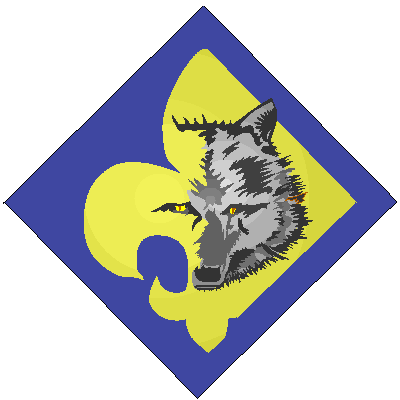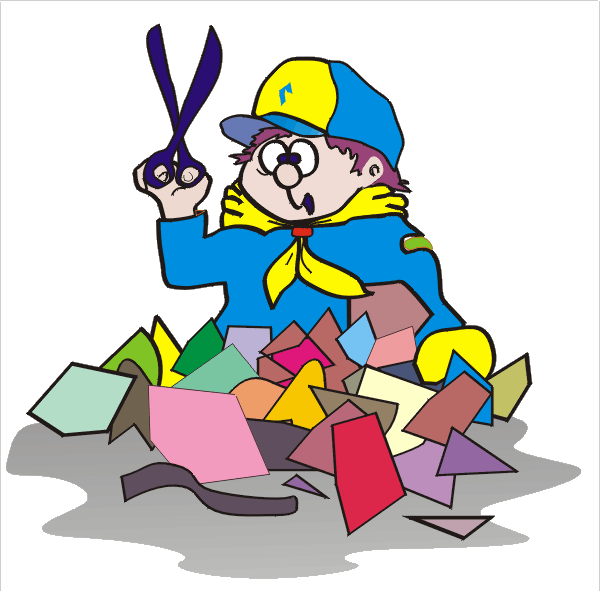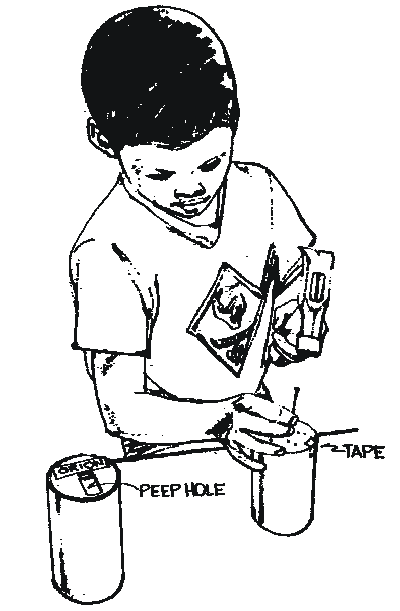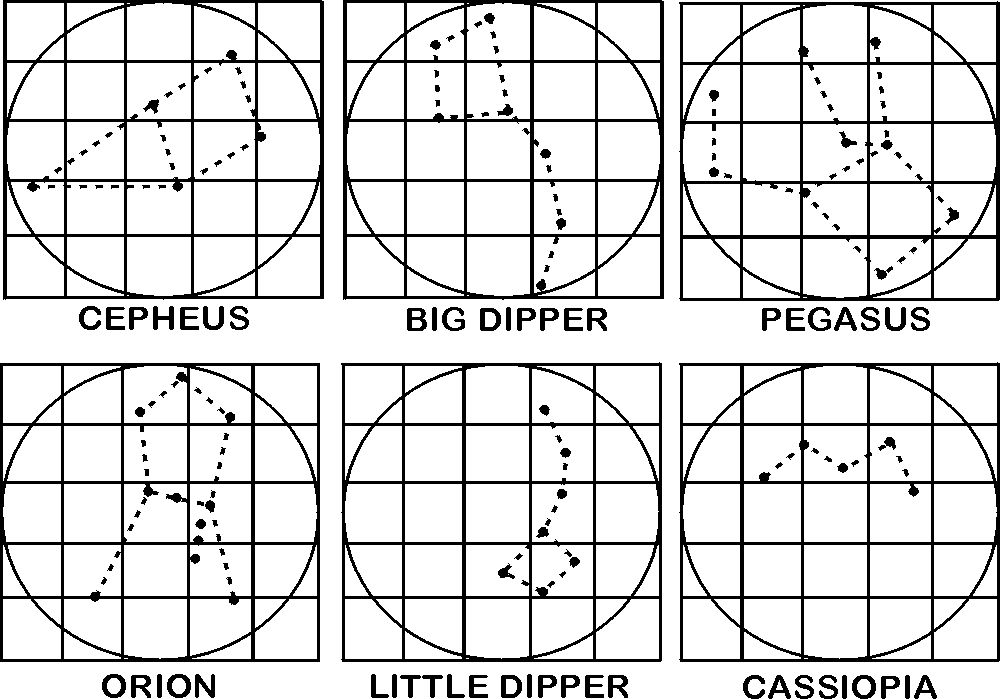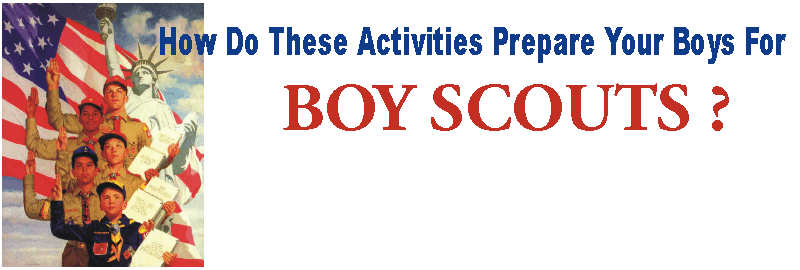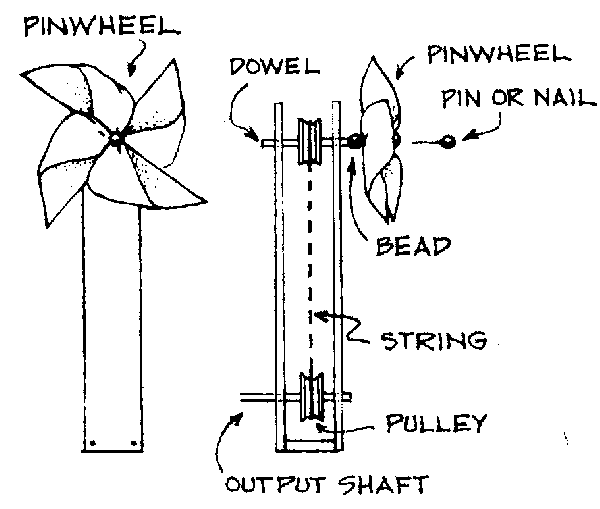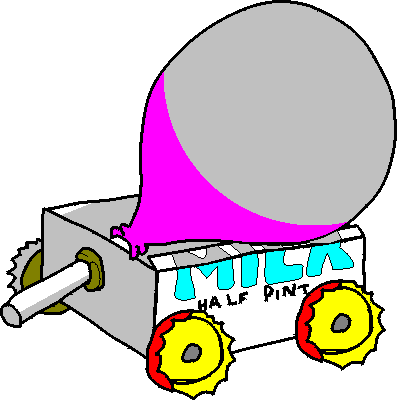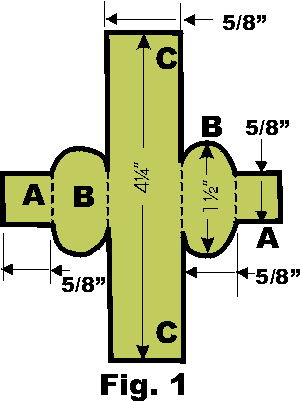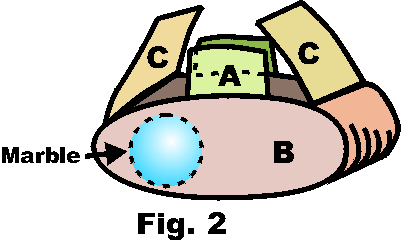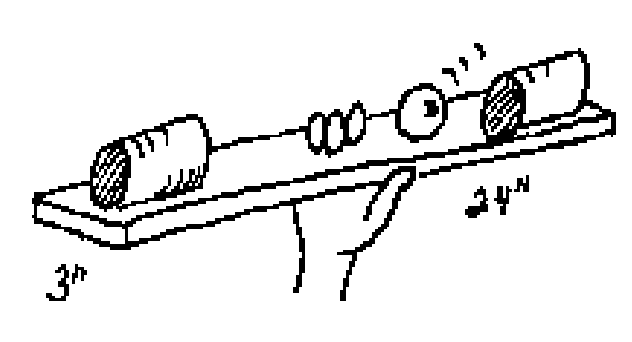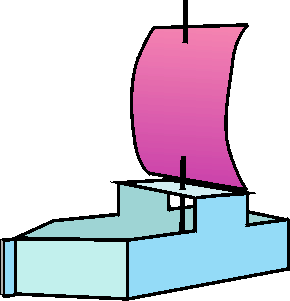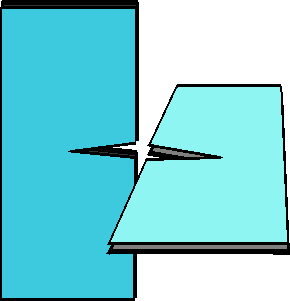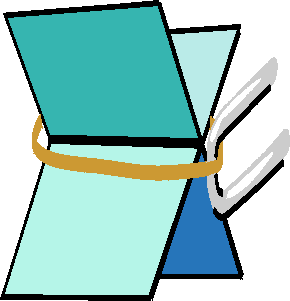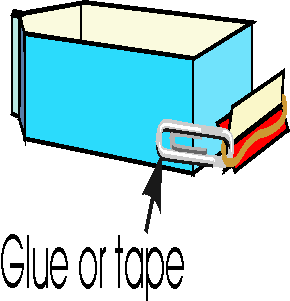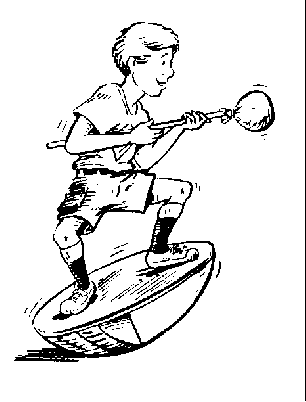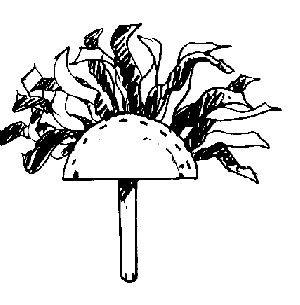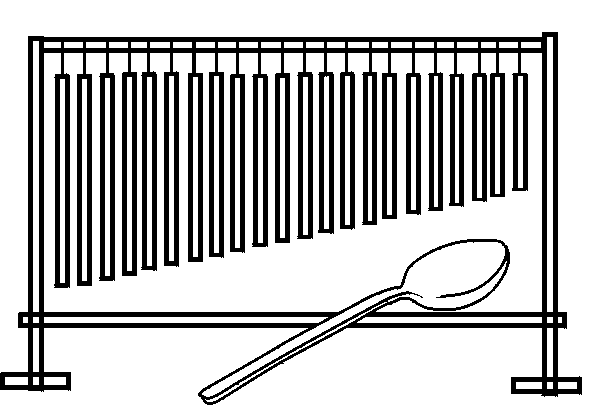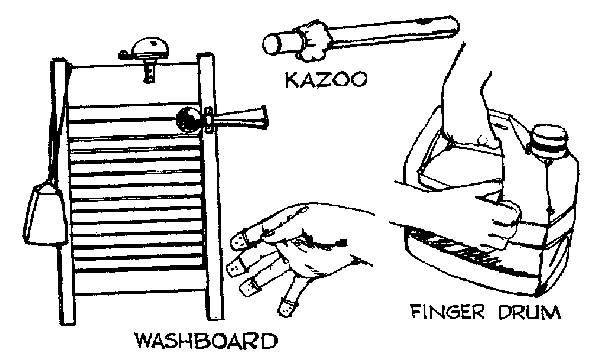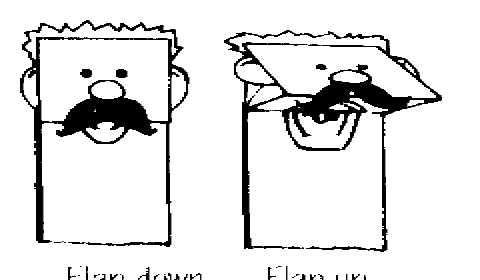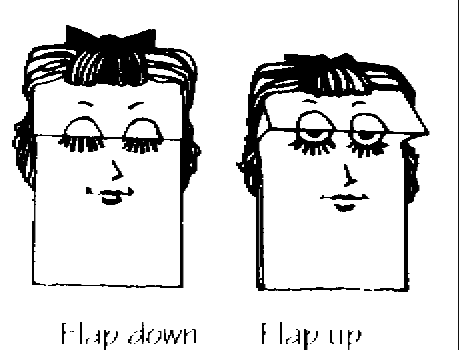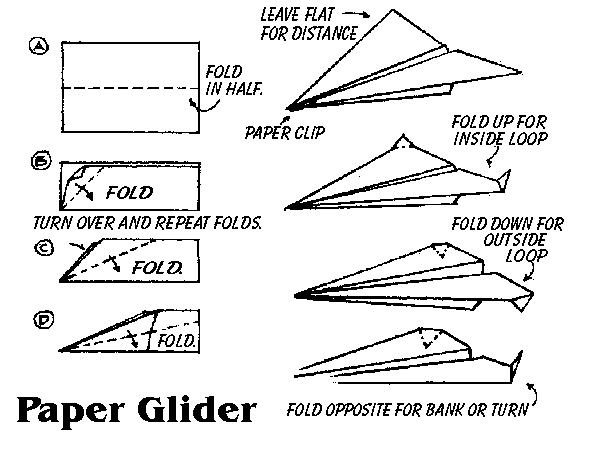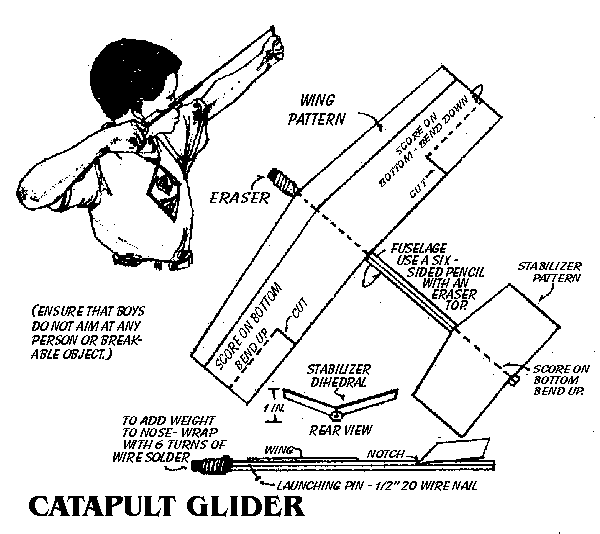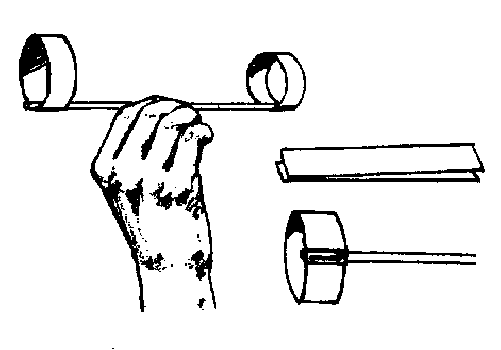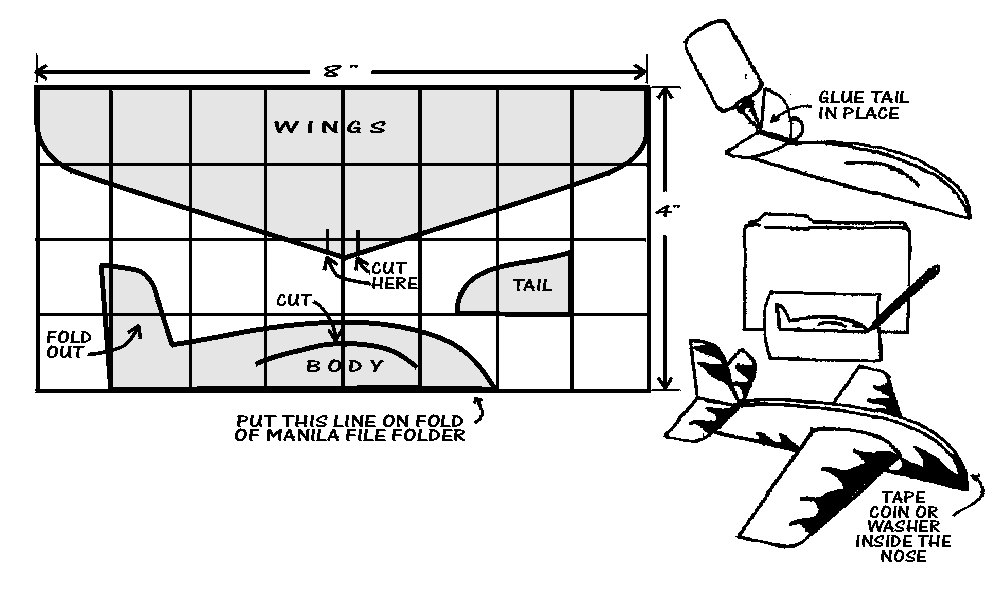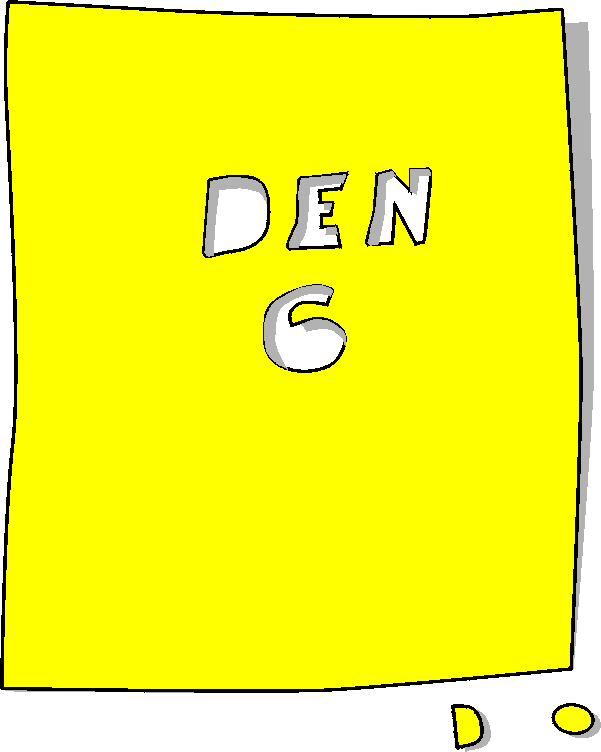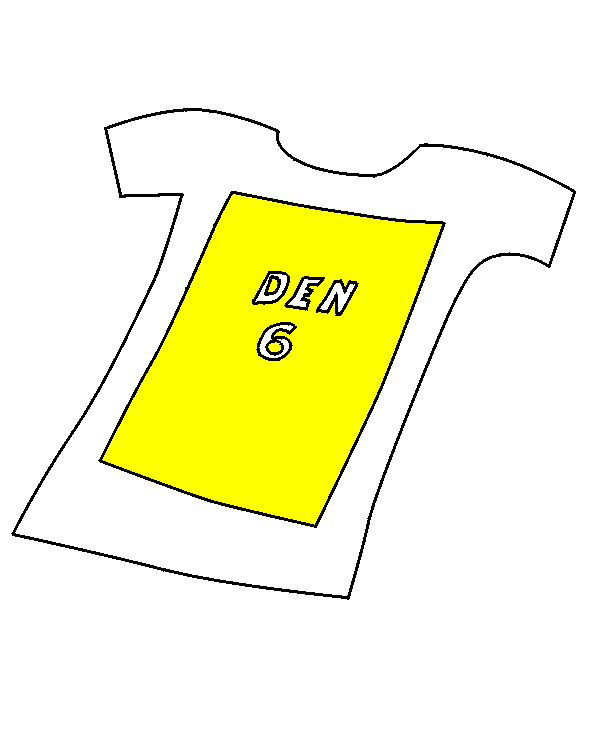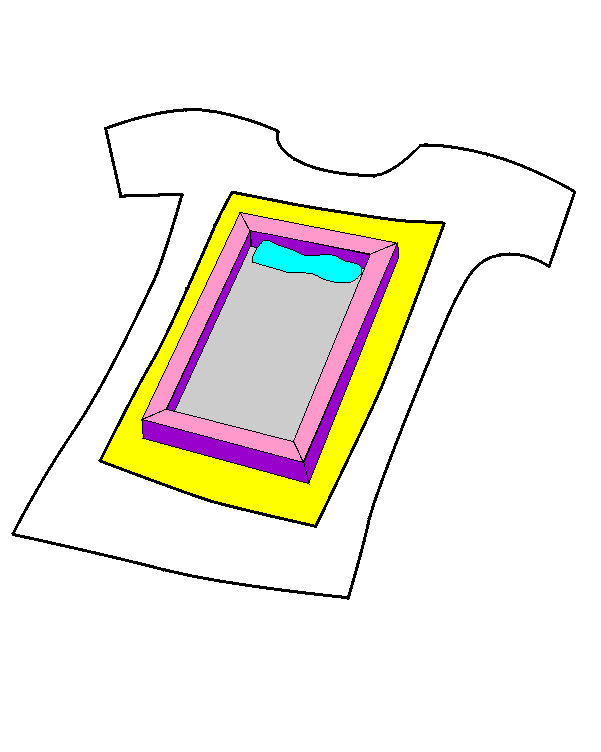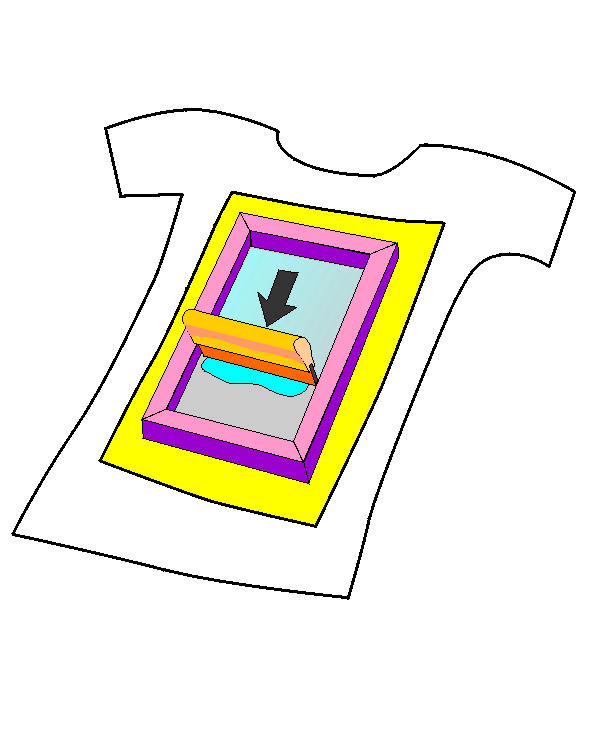Serve crisp rice
cereal treats or plain cup cakes. Decorate with frosting, raisins, gum
drops, red-hots, and/or M&Ms to look like computer viruses. Serve brownies
or square cookies. Decorate with above materials to look like floppy disks.
As an alternative
to Design Your Computer (above), provide graham crackers, frosting, and
candies, and have boys build their own "eatable computers" similar to gingerbread
houses.
Make fruity popcorn.
Requires 8 cups fresh, hot popcorn; 1/3 cup melted butter or margarine;
1 package Jell-O (any flavor). Put popcorn into a large paper sack, pour
in margarine or butter, close bag, and shake well. Open bag and sprinkle
in sprinkle in Jell-O. Shake well and serve.
Explanation:
This experiment works because the detergent will not mix with the milk,
so it "pushes" the milk out of the way, causing it to swirl. swirling
action mixes the food coloring to make the rainbow of colors.
One final reminder:
When you have finished the experiment, dump the rainbow milk down the sink
drain so no one drinks it.
To Project
Index
Back to Roundtable
BUTTER
CHURN
| Use pint glass jar with metal top.
Cut dasher from piece tin can and fasten to dowel with small nails above
and below it.
|
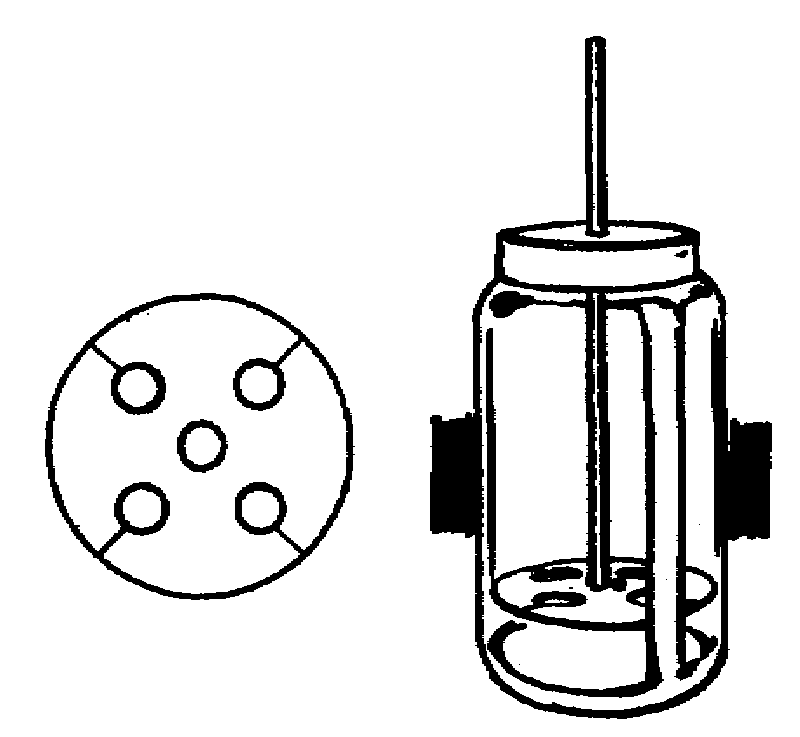 |
MAKING
BUTTER
A half-pint of whipping cream will make
one third cup of butter. Put cream in the churn. Let the boys take turns
moving the dasher up and down. After 20 to 30 minutes, butter will begin
solidifying on the dasher. Shake until the small bits form one larger piece.
Pour off the buttermilk.
With a wooden spoon, stir and press
butter to remove excess water. Rinse butter with tap water to remove more
water and keep the butter from tasting sour. If the finished product is
too sweet, blend in a pinch of salt |
|
Kitchen Chemistry
Check
this out: OOBLECK
Named after the stuff in
Bartholomew and the Oobleck by Dr. Seuss, this stuff is weird. Is it a
solid? Is it a liquid? Who knows?
Preparing
him to become a Boy Scout
Foil Cooking
Hints
| How about a
March cook-out with your den? This is real Scouting stuff! It will
take a bit of planning, some extra parent help and some luck with the weather,
but it will be worth it to the boys. |
FOIL COOKERY
HANDBOOK
Use two layers of light-weight,
or one layer of heavy duty aluminum foil. Foil should be large enough
to go around food and allow for crimping the edges in a tight seal.
This will keep the juices and steam in. This wrap is know as the
Drugstore
Wrap
Use heavy foil three times
the width of the food. Fold over and roll up the leading edges. Then roll
sides for a steam proof seal.
A shallow bed of glowing coals
that will last the length of cooking time is necessary.
Cooking Times:
-
Hamburger: 8-12 minutes,
-
Carrots: 15-20 minutes
-
Chicken pieces: 20-30 minutes,
-
Whole Apples: 20-30 minutes
-
Hot dogs: 5-10 minutes,
-
Sliced potatoes 10-15 minutes
FOIL
DINNER
Lay slices of potatoes, onion, and
carrots on a sheet of heavy-duty foil then place hamburger patty on top.
Cover with slices of potato, onion, and carrots. Season with butter, salt
and pepper. Cook 20-30 minutes over hot coals, turning twice during cooking.
Baked
Apple - Core an apple,
and place it on a square of heavy-duty aluminum foil. Fill hole with raisins,
brown sugar, and a dash of cinnamon. Wrap foil around apple and bake over
hot coals for 10 minutes.
George Rogers Clark
Council Pow Wow
CINNAMON SIPPIN'
CIDER
[ Serve after an outdoor activity]
In a saucepan combine 3 cups apple
juice, 1 cup cranberry juice cocktail, and 8 inches of stick cinnamon.
Bring to a boil and simmer uncovered for 5 minutes. Remove cinnamon.
Serve warm or chilled. Makes four 8 oz. servings.
To Project
Index
Back to Roundtable
Bannock
| Bannock was the staple scone
type bread made by settlers and trappers over open fires. |
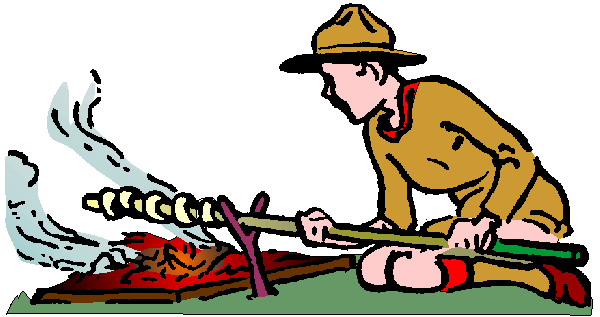
Made properly, with the addition
of butter/margarine and fresh berries or preserves, along with a hot cup
of Earl Grey tea, served in the middle of the bush, just this
side of nowhere, can make even the most up-tight Scouter almost mellow. |
Scouter
Jim's Bannock
1 1/2 cups all purpose
flour
1 tbs. baking powder
1/2 tbs. granulated sugar
1/2 tsp. salt
1/4 cup margarine or butter
1/2 cup water (almost)
Mix all dry ingredients together,
making sure that all are mixed well. Cut in margarine or butter, using
a pastry knife. Place result in a sandwich sized Baggie.
At the campsite, pour out
dried ingredients into bowl. Add enough water to make a soft dough. Bake
dough carefully until golden brown, using mess kit pot with a handle and
lid.
Makes enough to split evenly
between one Scouter and one Scout. To avoid incessant whining by the Scout
about him not getting his 'fair share', ensure that the Scout has his own
Baggie of bannock, thereby making the portion that the Scouter has to consume
a lot larger, making him a lot more happier and a lot more mellow.
Substitutions
for Wussies:
Liquid: Milk is the best
substitution for the water in this recipe. It does make a difference in
the flavor and texture of the bannock. Next best substitution is a water/powdered
milk combination.
Campfire:
Lacking the ability to build a campfire in the middle of your kitchen,
you can bake this recipe at 425 degrees F (220 degrees on the 'other' scale)
for about 20-25 minutes. Top should be lightly browned to achieve some
sort of mellowness when consuming.
Other
Methods of Making Bannock:
On
a Stick or Twist Method:
Ensure that the fluid added
just makes a ball of almost sticky dough. Roll the dough into a long, flat
rope. Spiral the dough around a green stick and place over camp coals.
Remove all embers and ashes before consuming. Remember that Scouts do not
cut green sticks from living trees.
In
a Pan:
Add more fluid to the dry
mixture, and flatten out. Place in a frying pan over hot coals. Cooks much
similar to a doughy pancake.
In
aluminum foil:
Use at least two layers of
foil. Before you add the dough to the foil, make sure that you add butter/margarine
to the foil. Fold the foil around the dough, leaving room for expansion.
Place near hot coals, turning occasionally.
Other
sources of Bannock information:
Morton's Recipe Collection:
Bannock here Aboriginal Tourism Authority's
Bannock Jackie Naigle's First
Nation Bannock
Sigurd F. Olson's Bannock
© Copyright
1998, by Jim Speirs. All Rights Reserved. You may use this information
in your program, distribute it as training materials, or any other free
distribution to Scouters, as long as you don't accept paid advertising
or commercial financial support, without written permission of the author.
Jim
Speirs.
|
Jim Speirs' Web site has been retired. Jim, a Canadian Scouter was a special
source for outdoor knowledge and inspiration. We will miss him.
Twixer
Biscuits
Open a Bisquick
box, and make a depression in the contents so that you can pour a little
water into the hole. Stir it gently with "twixer" (clean, pronged
stick) until it forms an egg-sized ball. Remove ball of dough from
twixer, flatten it, and twist it around a pre-heated stick. Hold
over coals until browned and cooked through. Or, you may make a depression
in the dough and fill it with jelly or cheese. Wrap with foil, and bake
over coals for 10 minutes.
George Rogers Clark
Council Pow Wow
To Project
Index
Back to Roundtable
CAMP STOVES
AND OVENS
BUDDY
BURNERS & HOBO STOVES
Are you familiar with "buddy burners"
? You take a big can, like a coffee can. Cut a door in the
bottom, maybe punch some hole along the top with a can opener (the kind
that make a triangular hole). This makes the grill. (so
you would turn the can upside down and cook on the original bottom of the
can.
For the burner, take corrugated cardboard
and cut into strips and pack into a tuna can. Then fill with paraffin
wax. The cardboard acts as a wick to burn the wax. Light the
burner, slide it under the larger can. Great for burgers. There
are some web pages out there that will show this better. Also you
can use a can lid and wooden clothespin to put over the burner to control
the heat. Spray oil on the "grill" before using.
The
Cub
Scout How-To Book has Buddy burners and
tin can stoves on page 3-26 and 27. And you can carry your
How-To Book into the woods when you go there!
A Buddy Burner
Breakfast!
Beat 3 eggs
in a bowl.
Add 1/8 c milk.
Set aside.
Using two slices
of bread, make a peanut butter sandwich.
Dip the sandwich
in the egg mixture and toast lightly on greased buddy burner. When browned,
flip over and toast the other side. You can add banana slices to
the sandwich before toasting.
Kathy
Brown, Pathfinders, Newport, Nova Scotia, Canada
Eggs
on a Raft - Grease the cooking surface
of stove. Cut two-inch diameter hole in a slice of bread. Place bread on
burner and break egg into the hole. Season and turn over once While cooking.
Bacon and
Eggs - Fry bacon on hobo stove; add one
or two eggs and fry until done.
Hot Dog Delight
- Wrap a slice of bacon around wiener, pinning with tooth-picks. Fry on
hobo steve, or broil on a stick over hot coals.
Buddy
Burner FAQ's
Q About
how much Paraffin wax do you think I will need for say a dozen or so Buddy
burners?
A We
had bought 2 1-lbs boxes of paraffin, we filled about 10 sawdust filled
large cat food cans. It really makes a difference on how much space is
taken up the corrugated paper or sawdust.
Q What
is the best thing to use for the wick? The book says string wick? Is this
just string?
A We
used bailing twine, dipped in paraffin to water-proof it. Then added
to the container as it was filled with paper/sawdust.
Remember to
cover up the wick with wax, to water proof it. But make it visible
and close to the surface to dig it out of the mass of wax.
Q and
do you put more then 1 wick? The book shows one, but I think I read elsewhere
2 or 3?
A Multiple
wicks will start the surface burning faster. Sounds like a good idea.
Jay
Bemis, CM Pack 28
To Project Index
Back to Roundtable
Buddy
Burner Links:
 Back
to Index
Back
to Index
 Back
Home
Back
Home
 Back
to Camping
Back
to Camping
REFLECTOR
OVENS
| This makes a good den
or family project before a pack overnight or other outdoor activity. I'm
not sure about the porterhouse though. |
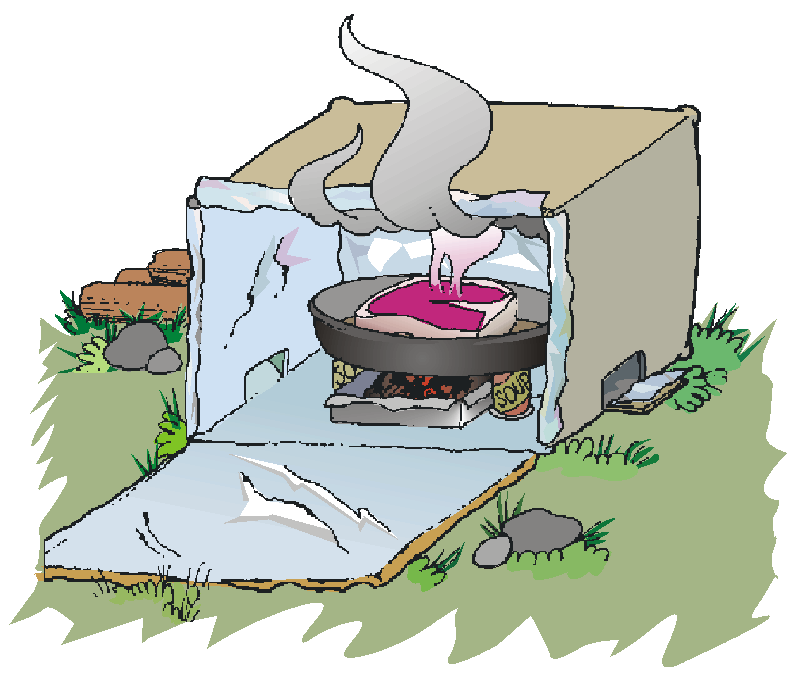 |
STEVE'S
METHOD
I'll be cooking biscuits this weekend
in my box oven. I used a double layer of foil, metal tape, and a STURDY
box. I use charcoal to power it and have no problems. |
| Start the charcoal on
a grill and then when they are gray, place them in the oven in a foil tray
so the bottom is protected.. This will be it's 4th outing and looks
as good as the day my son and I made it.
|
JUDY'S METHOD
My version of a box oven is one where
the fire (charcoal) goes on foil on the ground, not inside the box. I have
baked mini pizzas, brownies, etc. in what we call the box oven. Procedure
is:
-
Line box with heavy duty foil (no cardboard
showing).
-
Lay heavy foil on ground. Place
four empty cans (soda cans work well) inside the four corners, so that
the pan will set on them.
-
Prepare your food and place in pan or
on cookie sheet. Place enough evenly spaced charcoal briquettes on
the foil to equal the specified oven temperature. There is some difference
of opinion on the temperature value of one briquette, but we use the formula
that each briquette is 25 degrees.
-
Place pan or cookie sheet on top of cans.
-
Turn foil lined box upside down over
the entire thing. Find four sticks a little larger than a pencil
and place one under each corner of the box so you have about 1/4 inch of
space between the box and ground.
-
Cook for specified time. Remove
box and enjoy.
Of course some people like to get fancy
and use coat hanger wire to put a shelf in the oven, a pan in the bottom
for the charcoal and a lid that's adjustable for air flow, but that's a
lot more work than the above and doesn't yield any better results.
CHIP'S
WARNING
Maybe part of my problem was that
I started the fire in the box from scratch instead of placing already hot
charcoal started from a grill. Out of 7 boxes that I lined with foil only
2 did not catch fire and burn.
ICE
CREAM IN A BAGGIE
Using basic materials and ingredients
[ice, milk, eggs, granulated sugar, rock salt, flavoring, spoons, cups,
napkins, and plastic bags] we made ice cream. Then, role-playing
as budding student-scientists, we investigated this ice cream and the commercial
product. Here are the instructions for making ice cream:
Pass out two zip
loc bags to students, one small and one large. Have them fill to
1/2 capacity the large bag with crushed ice and then add in the large bag
six (6) tablespoons of rock salt on the ice.
In the small bag,
they should put in one (1) tablespoon of sugar, 1/2 teaspoon of vanilla
flavoring and 1/2 cup of milk. Secure the zip loc bag and place the
small baggy inside the large bag. Have the students shake the
baggies for 5-10 minutes until the ingredients begin to gel.
They can add cookie
crumbs, chocolate syrup, fruit, etc. at this point to the ice cream
For additional information see these
websites:
Renee Robinson [ST
Galasius School] Handout: The Science of Ice Cream/ Kitchen Chemistry
 Back
to Index
Back
to Index
 Back Home
Back Home
 Back to Camping
Back to Camping
NATURE
PROJECTS
Your
den's activities will depend in part on where you live - the kinds of flora
and fauna that grow there and how advanced springtime is in your area.
Wherever you are, there should be plenty to see, hear, and smell in the
outdoors.
For many other
ideas, see Chapter 8, “Nature and Outdoor Activities,” in the
Cub
Scout Leader How-To Book. You will also find
nature related activities in the Wolf Cub
Scout Book (Achievements 6 and 7 and Electives
13, 15, 18, and 19) and in the Bear Cub Scout
Book (Achievements 5 and 6 and Electives 2,
12, and 15).
Nature Rambles
and Hikes - A short nature
ramble in the backyard or a playground is suggested for the first den meeting
and a longer hike for the third meeting. On both occasions, encourage the
boys to look, really look, at what they see outdoors every day. Each boy
should carry a container to collect such simple things as a blade of grass,
an acorn or other nut, a seed, old leaves, dead insects, twigs, interesting
small rocks. When you get back to the meeting place, use field guides to
trees, insects, birds, and rocks to try to identify their prizes. Also
try to answer such questions as:
-
What animals eat
acorns?
-
What do buds on
trees become?
-
What is the purpose
of a leaf?
-
Where do ants live?
NATURE
PROJECT
Discover
how insects and spiders survive the winter
You Need:
Warm clothes and a nice day
flashlight,
magnifying glass (helpful but not necessary)
large glass jar or milk carton,
potting soil,
cheesecloth or old nylon stocking
rubber band,
knife or pruning shears.
What
to do:
Go outside. Look into crevices in
bark, in and under dead logs, piles of leaves, clumps of grass, shingles,
around windows, in cracks between bricks, in attics, basements, garages,
and any place that provides shelter.
Use your flashlight and a stick for
probing. Can you find active and hibernating adult insects, eggs, and cocoons?
Try to leave things as you found them.
Try to find a gall on a tree or shrub.
Collect several different types. While still outside, cut them in half
and observe what is inside.
You can keep galls to see what emerges
in the Spring. Cut a 4-6" section of a twig with a gall.
Put a layer of potting soil into a
jar, or a milk carton with holes cut in two sides. Put one end of the twigs
into the dirt. Cover the jar with cheesecloth or stocking secured by a
rubber band, or slide the milk carton into a stocking and tie the ends.
Moisten the dirt occasionally. Keep the galls outdoors, out of direct sunlight.
To
Project Index
Back to Roundtable
PRINTING
LEAVES
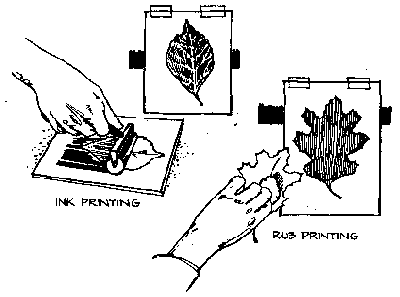 |
To ink print
a leaf, place it on a glass plate and roll small dab of printer's ink over
it. Then place leaf ink side down, on white paper, cover with newspaper,
and run roller over it. For a rub printing, use wad of cotton to rub leaf
with graphite or colored chalk. Place paper over the leaf and rub it with
another wad of cotton. To fix the print, spray with a fixative from an
art supply store. |
GREAT
BUG HUNT
| Each Cub Scout
has a jar with a mesh cover or screw-on lid with holes punched in it for
ventilation. |
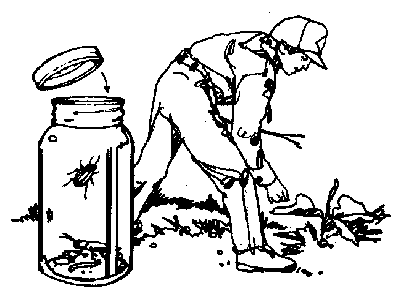 |
| On
signal, they capture as many living creatures as they can find - worms,
spiders, ants, grasshoppers, beetles, and other Insects. After 10 minutes,
count what they have caught and have the boys release their captives. |
TREE
BARK RUBBINGS
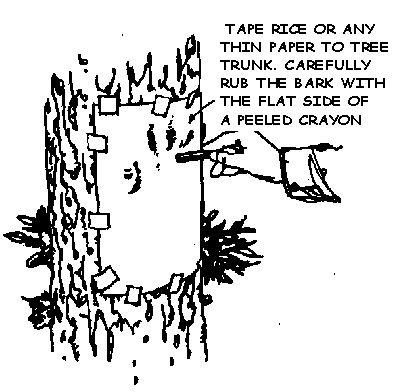 |
You
can make interesting patterns with rubbings of smooth bark trees by the
same method used for gravestone rubbings. . |
| Tape
rice paper to the tree and carefully rub with the side of a crayon. The
technique works best on bark of birch, slippery elm, butternut, and wild
cherry. |
BEETLE
TRAP
| Sink an empty
tuna can to the rim in the ground and put bits of meat or fish in it. Beetles
will tumble in and not be able to climb out. |
 |
To Project Index
Back to Roundtable
SMALL
GREENHOUSE
Learn to grow and
care for plants by making a terrarium. It is a little garden sealed
in a glass container. Rich soil and moisture inside the jar make
the garden grow quickly. In planting your garden, use wild ferns,
violets, moss, and small cuttings of ivy or any houseplant that will grow
in water.
Materials:
A clear, wide
mouth 1 gallon glass jar and lid (ask at your neighborhood grocery, restaurant,
or delicatessen for an empty pickle jar.)
Sand or bird
gravel
A piece of
burned wood or some charcoal
About 2 cups
of rich garden soil
Plywood, 12"
x 8"
Strips of wood
1/2" thick and 1" wide
Thin brads
or nails
Hammer, saw
& sandpaper
Paint or stain,
if desired
Variety of
small plants
Build the base
for the garden
Five pieces
of wood are used to make the base. The base measures 12"x 8".
Set up as a rectangle the smaller pieces of wood, squaring it on the on
the base. This is where your jar will fit. Two of the pieces
are 6" long and the others are 5" long. Nail these to the base, sand
the inside of this rectangular to make the jar fit snugly within it.
Place the jar,
thoroughly clean, on its side on the wooden base.
Put a 1/2"
layer of sand or bird gravel in the bottom of the jar as it lies on its
side.
Crush a piece
of charcoal o r burned wood between newspapers and sprinkle a layer of
charcoal over the sand.
Add a layer
of rich dirt. The garden can be higher at the backside of the jar,
but be sure the dirt is smoothed away from the mouth of the jar so that
it will not spill out.
Set your plants
at least an inch deep in the soil.
Spay the garden
with water. Do not get dirt to wet.
Seal the jar
with the lid and set the tiny greenhouse in a spot where it will get some
sunlight each day.
Watch the garden
carefully for a day or two. If it appears to be too wet, take off
the jar lid for a day or more until the garden dries some.
The garden
will grow for 2 or 3 months without having to be opened.
A
KID'S GUIDE TO BIRD WATCHING
To Project Index
Back to Roundtable
PLACES TO
GO
LOCAL
DUMP - learn about producing less garbage, recycling, reusing resources.
SEWAGE TREATMENT
CENTER (a.k.a. Palo Alto Water Quality Control) for Bear Cub Scouts and
above
BFI San Carlos
(recycling) - to work towards their Conservation Badge
Resource
Revival, 2267 North Interstate Avenue, Portland Tel: 800-866-8823 Since
1994, our award-winning designs have saved over 100,000 pounds of used
bicycle, automobile, and building parts from landfills. We make everything
by hand in Portland, and delight in the way our unique materials make each
piece as individual as the artists who create them
AUDUBON
HOUSE: 5151
NW Cornell Rd., Portland. - (503) 292-6855. Nature Center and Store
hours: Mon.-Sat. 10am – 6pm, Sunday 10am – 5pm. Hiking, Bird Sanctuary,
Nature Center, Classes, Wildlife Care Center, Conservation Advocacy, Nature
Store, Field Trips, Guided Sanctuary Tours, Volunteer Programs.
BONNEVILLE
FISH HATCHERY:
Exit 40 on 1-84. (503) 374-8393. Daily 7:3O - dusk. Free. Check out the
Free Fishing Weekend held annually in early June. Great for beginning anglers.
CRYSTAL
SPRINGS RHODODENDRON GARDEN:
SE 28th Ave., North of Woodstock Ave. - (503) 777-1734 Open March through
June. Nearly 1000 varieties of rhododendrons and azaleas. Free Tues. and
Wed., $2/person other days but if you call ahead you may be able to get
the charge waived for Cub Scouts if you can't get there Tue. or Wed. Open
dawn to dusk. This is a walking tour and not a park to run around in. Buy
cracked corn there to feed the ducks.
HOYT
ARBORETUM:
4000 SE Fairview Blvd., Portland (503) 823-3655 Open dawn to dusk.
Guided tours 2pm Sat. and Sun. For groups please call ahead for reservations.
Free admission. Self-guided tour books available with 10 miles of trails.
This is a walking tour, not a place to run around in
OXBOW
PARK: Wood Village
Exit 16 off I-84 in Gresham. Go south to Division Street. Turn left, and
continue to Oxbow Parkway. 1,000 acres of dense forests, grassy clearings,
sandy river frontage, and sheer canyon walls. Old growth forest alone
covers 180 acres.
AUDUBON
SUGGESTIONS
Hang bird feeders
with different types of bird food.
Plant native
plants that flower and fruit.
Provide nest
boxes and nesting material.
Provide a source
of water.
Mark large
windows with decals or streamers to prevent birds from flying into them.
Keep your cat
indoors! (Cats are very good at catching birds.)
What
YOU Can Do to Save the Rainforest
Support companies
that reduce rainforest destruction: Buy SmartWoodCM -certified wood products
and produce from ECO-O.K.TM -certified farms.
Choose products
that conserve energy: Buy energy efficient appliances, energy saving windows
and fuel efficient cars. Be an environmentally responsible consumer. Look
at Socially Responsible.com for a listing of responsible retailers, businesses
and organizations.
Look for products
with minimal packaging: Do you really need individually wrapped juice boxes
or can you use a thermos instead? Packaging makes up almost 50% of our
garbage by volume. (Source: American Museum of Natural History's
Center for Biodiversity and Conservation.)
Buy products
that are made locally: Products generate pollution when they travel, whether
it's by train, truck or plane.
Use the right
paper: Look for paper that is certified, or made from recycled products
or tree free fibers such as kenaf or hemp. Choose paper that has
been processed without chlorine. Always use the back of a sheet of paper
when you can.
Reuse and recycle:
You can recycle just about anything these days. Return your hangers to
the dry cleaners and use milk cartons as planters for spring and summer
seeds.
Write letters
to your elected officials: Let them know how much conservation issues matter
to you. For US residents, the League of Conservation Voters is a good information
resource, providing environmental scorecards for all members of Congress.
Join an organization:
Support groups that work to protect tropical forests, like the Rainforest
Alliance.
Support locally
based organizations in tropical countries: Donate to our "Allies in the
Rainforest" program.
the Rainforest
Alliance: canopy@ra.org
BIRD
CALL
MATERIALS; 2"
hardwood, eye screw, resin powder
Take a close grained
hardwood such a rock maple or mountain ash, about 2" long.
Drill a hole
in one end, slightly smaller than the screw threads of your eye screw.
Turn the eye screw into it. Unscrew the eye, put a little resin powder
in the hole. As you twist the screw back and forth in the hole, very slowly,
you can make a chirp chirp or trill in loud, clear notes.
With practice,
this device will produce an astounding variety of bird noises.
Paint or decorate
if desired.
Actually, Rosin
is the solid form of the liquid resin, so you will probably
be more successful
if you look for for Rosin Powder that is usually available
in Sports Stores
as Rosin Bags.
